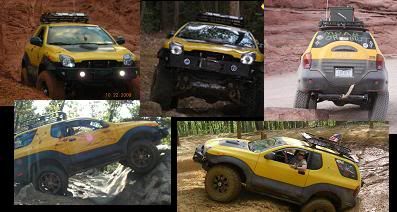i too had heard that welding to the VX frame is very very very bad because its a "cold weld" frame (i have no idea what that means)...but i know that if you "hot weld" to it, it severely weakens it...
im planning on bolting mine on...i would rather have to go through the pain of bolting them on then having problems with the frame...
oh and btw...i made contact with a guy at work tonight that is a welder nearby where i live...he seams very very reasonable with prices...
i plan on going to talk to him about skids in the next few days...i will let you all know what he asks for something similar to kenny's...with a few tweaks of my own  ....
....
"Do Not Seek Praise. Seek Criticism."
"If You Can't Solve A Problem, It's Because You're Playing By The Rules."
"The Perosn Who Doesn't Make Mistakes Is Unlikely To Make Anything."
-Paul Arden
....



 Reply With Quote
Reply With Quote










